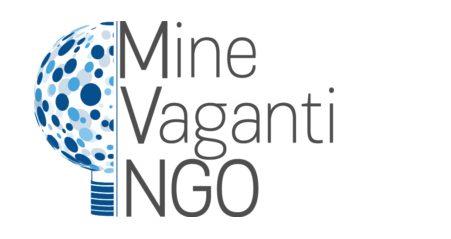Interventions in the Elderly’s Mobility Modes for Promotion of their Physical Activity and Fitness
Project Code: 622623-EPP-1-2020-1-DE-SPO-SCP
EU Grant: 399.570,00 EUR
Programme: Erasmus+
Key Action: Sport
Action Type: Collaborative Partnerships
Coordinating Organization: Technische Universität Berlin [DE]
Participating Countries:
- University of Lisbon [PT]
- Cracow University of Technology[PL]
- University of Zagreb [HR]
- Mine Vaganti NGO [IT]
- Northern Greece Physical Education Teachers ́Association [GR]
- Sports Ambassadors Association [TR]
Project dates: 01.01.2021 – 30.06.2023
One of the main purposes of the Fit-Old project is to enhance the health levels among elderly people utilizing interventions in the elderly’s mobility modes within European Partnerships. Mobility and more sustainable modes of transport have advantages for elderly people, including achieving access to desired people and places, psychological benefits like feeling independent, physical benefits such as direct impacts on muscle and bone strength, cardio-vascular improvements and overall health, social interaction, and involvement in the community. While mobility limitation is common in elderly people, there is a lack of plans and studies in intervention programs as well as academic studies directed at this age group.
On one hand, active and sustainable mobility is associated with health improvements in older people directly. On the other hand, it has some benefits in the scale of cities and countries by reducing air pollution, increasing efficiency in the elderly population, comprehensive policies for urban areas and neighborhoods based on sustainable mobility and considering all disability groups.
The current project follows these steps to promote physical activity and interventions in mobility to achieve sustainable mobility aims and improve health parameters in older people:
- The Fit-Old project intends to consider both scientific and practical aspects to reduce the distance between academic studies and policymakers as well as target groups. In regard to several studies, limitations in active mobility are the result of increased disability by aging, urban form, less dense and sprawled neighborhoods, suburbanization, less safe ways, inefficient public transportation systems. Interventions in the Elderly’s Mobility Modes for Promotion of their Physical Activity and Fitness/ Fit-Old Page 10 of 108 Significant differences are commonly observed between different countries and when factoring in socioeconomic factors.
- Promotion of physical activity is associated with the development of a multifaceted strategy and policy across multiple sectors. The current project tries to consider socioeconomic and cultural factors in different parts of Europe such as East, South, West and Central Europe to get a better understanding of various conditions related to active mobility among partners. It also aims to provide local policies according to the contextual issues-the results of this study can be translated for ordinary and less educated people within the related topic. Translation results and providing friendly advice for promoting active mobility can solve the problems of complicated results in academic research being unobtainable by the respective target group. To achieve this, Fit-Old intends to forge a link between different stakeholders and cover gaps between the production of scientific results and target groups by translating results in the local language. Therefore, it will be more efficient for strategists and decision-makers.
Project target groups:
The target group of Fit-Old is the elderly of more than 65 years of age of all genders as well as all possible socio-economic and demographic groups living in urban areas.
Project objectives:
The overall objectives of Fit-Old are as follows:
- Objective 1: Providing the state-of-the-art of the topic of the relationships between the daily mobility of the elderly of more than 65 years, their perceptions, the built environment, socioeconomics and personal attributes with their physical activity and fitness in 6 European countries, with focus on less studied contexts.
- Objective 2: Production of reliable data generated uniformly in6 partner countries. This will facilitate understanding the dissimilarities between these issues in different European countries and regions. As a result, more effective intervention policies can be adopted.
- Objective 3: To shorten the time that the results of such academic studies reach the hands of policymakers, planners, and those who are supposed to intervene in the way the elderly act out their daily urban travels and possibly affect their physical activity and fitness.
- Objective 4: To fill the gap between the empirical academic studies on the project subjects with the real users, namely the seniors with more than 65 years of age. This project attempts to provide easy to-understand inputs for seniors within the shortest time between the production of scientific outputs and presentation to end-users.
Intellectual Output:
- Journal paper 1
- Journal paper 2
- Journal paper 3
- A supplementary document to the dataset of WP3 (assessment tests).
- Journal paper 4
- Journal paper 5
- Journal paper 6
- Eight booklets in different languages on the planned interventions for policymakers
- An open-access presentation material in the languages partners
- Preparation of 6 journal papers and submission to journals
- Holding 5 awareness-raising events





